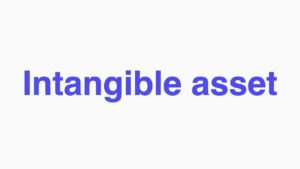Options: meaning, types, benefits, risks and more

Businesses across the world foster means to trade with ease while maintaining high-profit yields. One of such trading technique is options.
In this article, we will explore the meaning and other important aspects of options, including types, pricing, and their potential benefits and drawbacks.
What are options?
Options are financial derivatives that provide the buyer with the right, but not the obligation, to buy or sell an underlying asset at a specified price and time. They are commonly used as a risk management tool or as a speculative investment strategy.
Understanding the basics of options: key terms and concepts
Options trading can be a complex subject, and it is important to understand the key terms and concepts associated with it. One of the most fundamental concepts is the distinction between calls and puts. A call option gives the buyer the right to buy an underlying asset at a specified price (known as the strike price) by a certain date (known as the expiration date). A put option, on the other hand, gives the buyer the right to sell an underlying asset at the strike price by the expiration date.
Another important concept in options trading is the premium, which is the price the buyer pays for the option. The premium is influenced by several factors, including the price of the underlying asset, the volatility of the market, the time to expiration, and the interest rate.
There are also several types of options that investors can trade, including exotic options such as barrier options, binary options, and Asian options. These types of options have unique features that can affect their pricing and their suitability for different investment strategies.
By understanding these key terms and concepts, investors can make more informed decisions when trading options. It is important to do your research and consult with a financial professional before investing in options, as they can be a high-risk investment strategy that may not be suitable for everyone.
Types of options
Options are financial instruments that provide the buyer with the right, but not the obligation, to buy or sell an underlying asset at a predetermined price and time. There are two main types of options: call options and put options.
Call options give the buyer the right to buy an underlying asset at a specified price, while put options give the buyer the right to sell an underlying asset at a specified price. Both types of options have an expiration date, after which they are no longer valid.
There are also exotic options. Exotic options are more complex than traditional options, and often include additional features or conditions that can impact the payout structure. These can include barrier options, binary options, and Asian options, among others.
Barrier options include a price barrier that must be reached or not reached for the option to be exercised. Binary options have a fixed payout if the option is exercised and a fixed loss if it is not. Asian options use the average price of the underlying asset over a specified period to determine the payout.
Investors should carefully consider their investment goals and risk tolerance before trading any type of option and should consult with a financial professional to determine the most appropriate strategy for their needs.
Pricing options: factors that affect the price of an option
The price of an option, also known as the premium, is influenced by several factors. Understanding these factors is critical to making informed decisions when trading options.
One of the most important factors that affect the price of an option is the price of the underlying asset. In general, the higher the price of the underlying asset, the higher the premium for a call option, and the lower the premium for a put option. This is because call options allow the buyer to purchase the underlying asset at a lower price than the market value, while put options allow the buyer to sell the underlying asset at a higher price than the market value.
Another important factor is volatility. Volatility refers to the degree of variation in the price of the underlying asset. The more volatile the asset, the higher the premium for both call and put options. This is because greater volatility increases the likelihood of the underlying asset reaching the strike price, which increases the potential payout for the option buyer.
Time to expiration is also a significant factor in pricing options. The longer the time until expiration, the higher the premium for both call and put options. This is because options with a longer expiration period have a greater chance of the underlying asset reaching the strike price, which increases the potential payout for the option buyer.
Other factors that can impact the price of an option include interest rates, dividends, and the strike price. It is important to consider all of these factors when trading options and to consult with a financial professional to determine the best strategy for your investment goals and risk tolerance.
Benefits and risks of trading options
Trading options can offer several benefits to investors, including the potential for higher returns, increased flexibility, and the ability to hedge against potential losses. However, there are also risks associated with options trading, and investors need to understand these risks before getting started.
One of the primary benefits of options trading is the potential for higher returns. Options provide investors with leverage, which means that a relatively small investment can potentially result in a large payout. Additionally, options can be used to generate income through strategies such as selling covered calls.
Options can be used to bet on a variety of market conditions, including bullish, bearish, and neutral outlooks. Additionally, options can be used in conjunction with other investment strategies, such as stock trading, to create a more diversified portfolio.
However, options trading also comes with risks. Options are a complex financial instrument, and even experienced investors can experience losses if they do not properly manage their positions. Additionally, options trading involves significant volatility and can be impacted by a variety of market conditions, including changes in interest rates and geopolitical events.
To minimize the risks of options trading, it is important to develop a sound strategy and to properly manage your positions. This may involve setting stop-loss orders, monitoring your positions closely, and diversifying your portfolio. Working with a financial professional can also help develop a strategy that meets your investment goals and risk tolerance.
Conclusion
Options trading can offer both benefits and risks to investors. While it can be a powerful tool for generating higher returns and hedging against potential losses, it requires careful consideration and management to minimize risks.
Investors need to educate themselves about the various types of options, as well as the factors that affect pricing, before getting started. Working with a financial professional can also help develop a sound strategy that meets your investment goals and risk tolerance. With proper education and planning, options trading can be a valuable addition to any investment portfolio.
Don't miss a thing. Follow us on Telegram and Follow us on WhatsApp. If you love videos then also Subscribe to our YouTube Channel. We are on Twitter as MakeMoneyDotNG.





